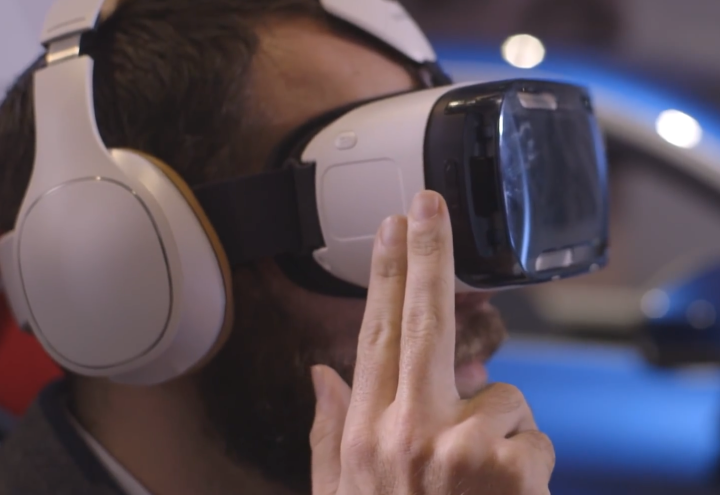
Using the headset, developed by the MIT spi-off, people can attach their smartphone to the front, which will the display various green and red lights and lines. Using a dial, the person has to try and align the colors. EyeNetra then compares their attempts with the how the alignment should look and roughly diagnoses things like near or far sightedness or astigmatism.
EyeNetra says it has now been talking with virtual reality companies about adapting the technique and headset for creating prescription VR screens for people that usually wear glasses. Raskar didn’t name any VR companies that he has been talking with, however.
People with glasses can struggle with VR headsets, says EyeNetra as the eye lens, glass lens, and the VR screen all have to be aligned right to work properly. If the frames move even slightly, it can disrupt the view and can even cause headaches or nausea.
If successful, EyeNetra’s technique would mean the VR screen is adjusted to the person’s own vision deficiencies and companies could develop technology that can be pre-configured for your eyesight’s refraction errors.
“It’s personalized correction,” says co-founder Ramesh Raskar. “Your [vision] correction is built into the headset.”
EyeNetra has previously founded two start-ups that administer on-demand eye checks using its hardware – Blink in New York for carrying out eye tests at home or in offices and Nayantara in India, which delivers eye testing to poor, remote villages.
“In addition to the major business [EyeNetra] is doing for prescriptions, it can also disrupt virtual reality, which is potentially an even bigger market,” he says.
Editors' Recommendations
- Meta Quest 4: Here’s what we want from the next big VR headset
- Spatial computing went public this year, but the true test is ahead
- Apple may embrace the metaverse now after all
- What is screen door effect in VR?
- Apple’s XR headset could get one of the Mac’s best features


